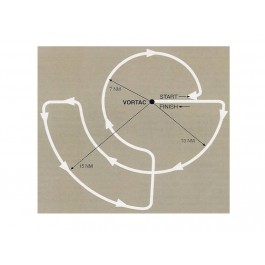|
|
DME ArcsDescriptionDME arcs are considered approach segments while feeder routes by definition are not.Your lead time for turning to intercept the arc is .5 nautical miles for speeds of 150 knots or less. You initial turn is 90 degrees. When intercepting a radial from a DME arc, the lead will vary with arc raduis and groundspeed. For the average GA aircraft flying arcs usually seen on approach plates at speeds of 150 knots or less, the lead will be under 5 degrees. Some interesting notes from the FAA's Instrument Flying Handbook AC 61-27C published in 1980: It is recognized that the pilot, particulary in a single pilot operation, is too busy during an instrument approach to use formulas for the computation of leads for arc and radial interception, therefore, none are given. Unless you are highly proficient in the use of the airborne equipment and in performing arc procedures, it is recommended that DME arcs be flown in IFR weather conditions only when RMI equipment is available. DME Arcs from Instrument Flying Handbook AC 61-27C DME Arcs from Instrument Flying Handbook FAA-H-8083-15 DME Arcs from Instrument Procedures Handbook FAA-H-8261-1A Click here for an article that Harry wrote regarding DME Arc approaches with the KLN89B InstLP, CFIILP Detailed Information
|










